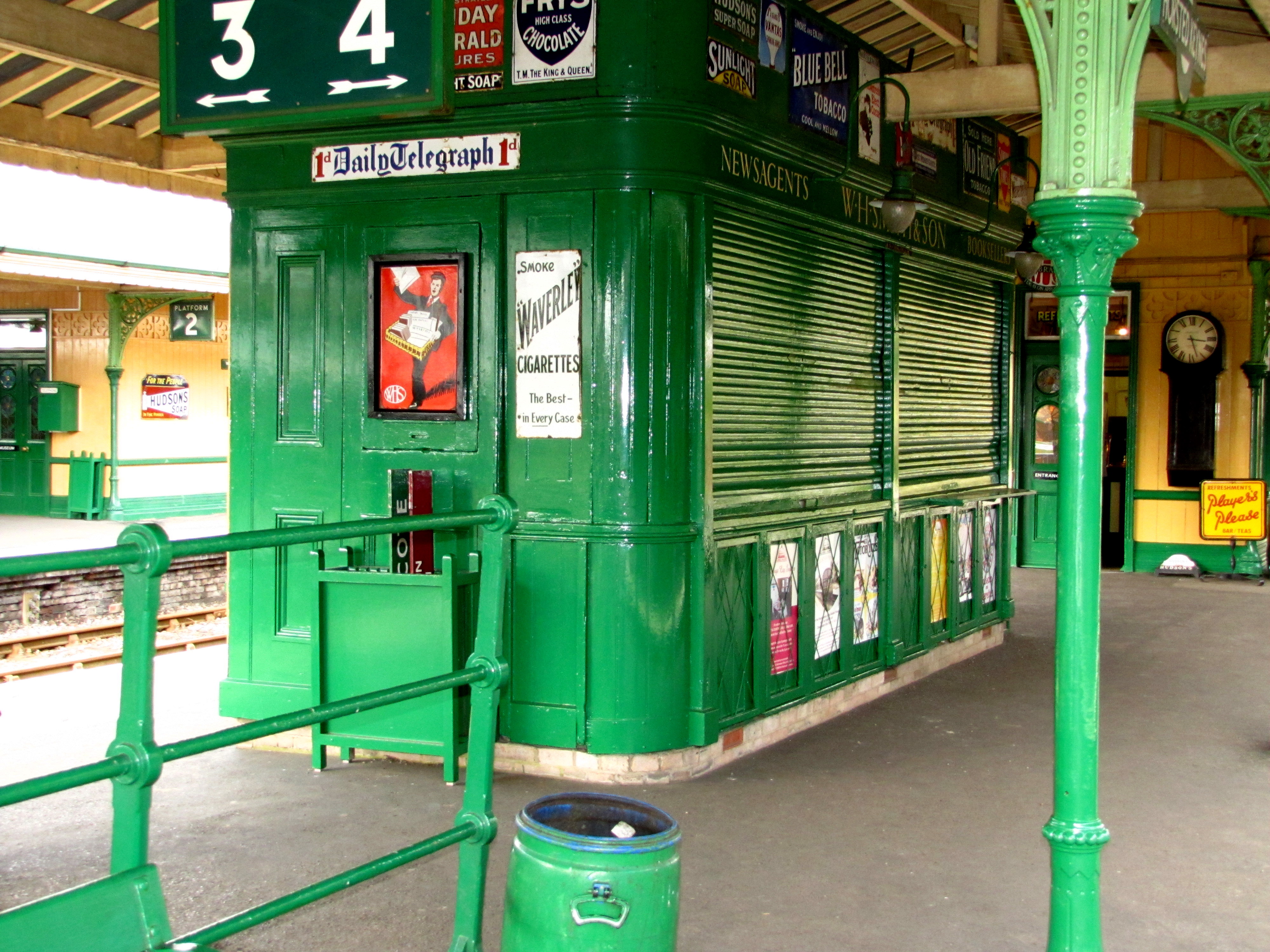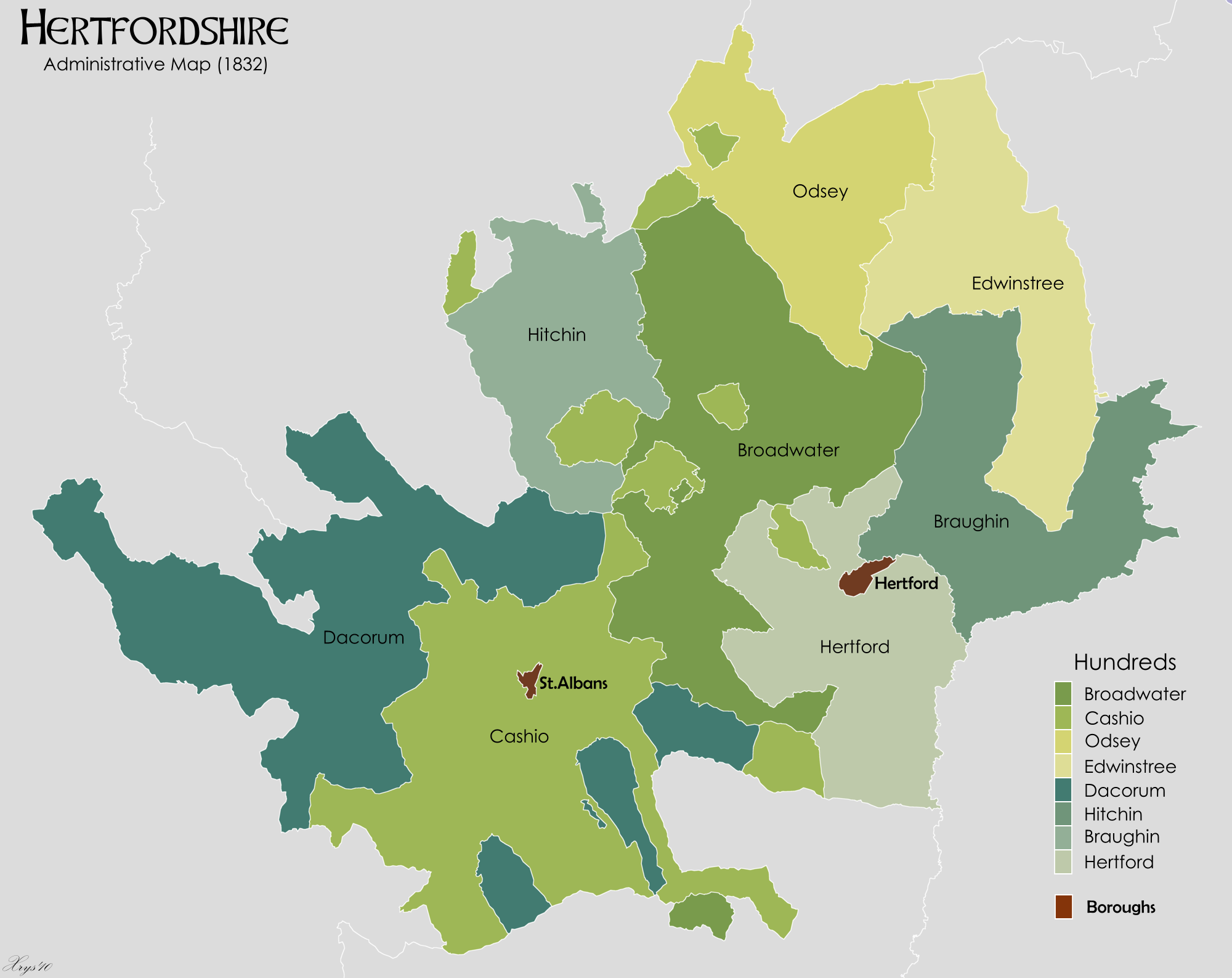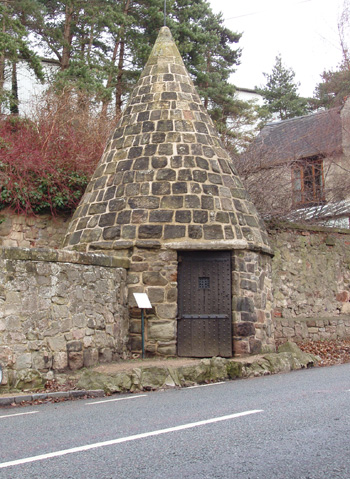|
Moot Hall, St Albans
The Moot Hall is a former municipal building in the Market Place in St Albans, Hertfordshire, England. The building, which now operates as two shops with office space above, is a Grade II listed building. History The first moot hall was a medieval structure which had been built on the site of George Smith's Town Hall and dated back at least to the 14th century. It was in the first moot hall that 15 rebels, who took part in the Peasants' Revolt in 1381, were tried and convicted of destroying property and records belonging to St Albans Abbey. The current moot hall, further to the south in the Market Place, was designed in the Tudor style using timber frame construction, and was completed around 1570. The design of the new building involved an asymmetrical main frontage of three bays facing onto the Market Place with a side elevation of eight bays stretching down Upper Dagnall Street. The first floor involved extensive use of jettied timber framing allowing the creation of extra ... [...More Info...] [...Related Items...] OR: [Wikipedia] [Google] [Baidu] |
St Albans
St Albans () is a cathedral city in Hertfordshire, England, east of Hemel Hempstead and west of Hatfield, Hertfordshire, Hatfield, north-west of London, south-west of Welwyn Garden City and south-east of Luton. St Albans was the first major town on the old Roman Britain, Roman road of Watling Street for travellers heading north and became the city of Verulamium. It is within the London commuter belt and the Greater London Built-up Area. Name St Albans takes its name from the first British saint, Saint Alban, Alban. The most elaborate version of his story, in Bede's ''Ecclesiastical History of the English People'', relates that he lived in Verulamium, sometime during the 3rd or 4th century, when Christians were suffering persecution. Alban met a Christian priest fleeing from his persecutors and sheltered him in his house, where he became so impressed with the priest's piety that he converted to Christianity. When the authorities searched Alban's house, he put on the priest's ... [...More Info...] [...Related Items...] OR: [Wikipedia] [Google] [Baidu] |
Jettying
Jettying (jetty, jutty, from Old French ''getee, jette'') is a building technique used in medieval timber framing, timber-frame buildings in which an upper floor projects beyond the dimensions of the floor below. This has the advantage of increasing the available space in the building without obstructing the street. Jettied floors are also termed ''jetties''. In the U.S., the most common surviving colonial version of this is the garrison house. Most jetties are external, but some early medieval houses were built with internal jetties. Structure A jetty is an upper floor that depends on a cantilever system in which a horizontal beam, the jetty bressummer, supports the wall above and projects forward beyond the floor below (a technique also called ''oversailing''). The bressummer (or breastsummer) itself rests on the ends of a row of jetty beams or joists which are supported by jetty plates. Jetty joists in their turn were slotted sideways into the diagonal dragon beams at ... [...More Info...] [...Related Items...] OR: [Wikipedia] [Google] [Baidu] |
City And Town Halls In Hertfordshire
A city is a human settlement of a substantial size. The term "city" has different meanings around the world and in some places the settlement can be very small. Even where the term is limited to larger settlements, there is no universally agreed definition of the lower boundary for their size. In a narrower sense, a city can be defined as a permanent and Urban density, densely populated place with administratively defined boundaries whose members work primarily on non-agricultural tasks. Cities generally have extensive systems for housing, transportation, sanitation, Public utilities, utilities, land use, Manufacturing, production of goods, and communication. Their density facilitates interaction between people, government organisations, government organizations, and businesses, sometimes benefiting different parties in the process, such as improving the efficiency of goods and service distribution. Historically, city dwellers have been a small proportion of humanity overall, bu ... [...More Info...] [...Related Items...] OR: [Wikipedia] [Google] [Baidu] |
WHSmith
WH Smith plc, trading as WHSmith (also written WH Smith and formerly as W. H. Smith & Son), is a British retailer, with headquarters in Swindon, England, which operates a chain of railway station, airport, port, hospital and motorway service station shops selling books, stationery, magazines, newspapers, entertainment products and confectionery. The company was formed by Henry Walton Smith and his wife Anna in 1792 as a news vendor in London. It remained under the ownership of the Smith family for many years and saw large-scale expansion during the 1970s as the company began to diversify into other markets. Following a rejected private equity takeover in 2004, the company began to focus on its core retail business. It was responsible for the creation of the ISBN book identifier. The company reached an agreement in 2025 to sell its high street store business to Modella Capital. Upon completion of the sale, that business will be renamed TGJones. WHSmith is listed on the Lond ... [...More Info...] [...Related Items...] OR: [Wikipedia] [Google] [Baidu] |
London Colney
London Colney () is a village and civil parishes in England, civil parish in Hertfordshire, England. It is located to the north of London, close to Junction 22 of the M25 motorway. It is around south-east of St Albans city centre (and within said city's contiguous built-up area) and part of the City and District of St Albans. At the time of the United Kingdom Census 2011, 2011 census the population of London Colney ward (politics), ward was 9,507, increasing to 9,804 at the United Kingdom Census 2021, 2021 census. It is considered a satellite or dormitory village of St Albans, where some villagers travel to work and shop. History Colney was first recorded in the 13th century. It takes its name from the River Colne, Hertfordshire, River Colne, with the Old English suffix ''ēa'', meaning "river". The name London Colney, first recorded in 1555, referred to "Colney on the road to London", and distinguished the place from Colney Street. The village was on the boundary of the 18 ... [...More Info...] [...Related Items...] OR: [Wikipedia] [Google] [Baidu] |
Liberty Of St Albans
The Liberty of St Albans (also known as the ''Hundred of Albanestou'' or ''Cashio'') was a liberty situated within Hertfordshire, but enjoying the powers of an independent county. At the time of the Domesday Book the liberty was known as ''Albanestou'' and originally had the powers of a hundred. It was originally associated with the Abbey of St Albans, and later with the borough corporation. It was absorbed by Hertfordshire in 1874. The origins of the liberty are unclear, but the abbots of St Albans claimed that the privileges had first been granted by King Offa of Mercia, who founded the abbey in 793. The Liberty appears to have contained parts of the Dioceses of London and Lincoln. Haslam proposes that Cashio and Danais hundreds were originally a larger "proto-hundred" which was originally created to support the burh at St Albans by King Edward the Elder in the 900s to defend against the Danes. The interlocking nature of the two hundreds, together with the unique status of C ... [...More Info...] [...Related Items...] OR: [Wikipedia] [Google] [Baidu] |
Court Of Quarter Sessions
The courts of quarter sessions or quarter sessions were local courts that were traditionally held at four set times each year in the Kingdom of England from 1388; they were extended to Wales following the Laws in Wales Act 1535. Scotland established quarter sessions in the 17th century. Quarter sessions were also established in Ireland and British colonies overseas. Quarter sessions generally sat in the seat of each county and county borough, and in numerous non-county boroughs which were entitled to hold their own quarter sessions, although some of the smaller boroughs lost theirs in 1951; these non-county boroughs were mainly, but not exclusively, ancient boroughs. In 1972, all quarter sessions were abolished in England and Wales with the commencement of the Courts Act 1971, which replaced them and the assizes with a single permanent Crown Court. In Scotland, they survived until 1975, when they were abolished and replaced by district courts and later by justice of the pea ... [...More Info...] [...Related Items...] OR: [Wikipedia] [Google] [Baidu] |
Village Lock-up
A village lock-up is a historic building once used for the temporary detention of people in England and Wales, mostly where official prisons or criminal courts were beyond easy walking distance. Lockups were often used for the confinement of drunks, who were usually released the next day, or to hold people being brought before the local magistrate. The archetypal form comprises a small room with a single door and a narrow slit window, grating or holes. Most lock-ups feature a tiled or stone-built dome or spire as a roof and are built from brick, stone and/or timber. Such a room was built in many shapes; many are round, which gives rise to a sub-description: the punishment or village round-house (). Village lock-ups, though usually freestanding, were often attached to walls, tall pillar/tower village crosses or incorporated into other buildings. Varying in architectural strength and ornamentation, they were all built to perform the same function. Nicknames and forms They have a ... [...More Info...] [...Related Items...] OR: [Wikipedia] [Google] [Baidu] |
Sash Window
A sash window or hung sash window is made of one or more movable panels, or "sashes". The individual sashes are traditionally paned windows, but can now contain an individual sheet (or sheets, in the case of double glazing) of glass. History The oldest surviving examples of sash windows were installed in England in the 1670s, for example at Palace House, and Ham House.Louw, HJ, ''Architectural History'', Vol. 26, 1983 (1983), pp. 49–72, 144–15JSTOR The invention of the sash window is sometimes credited, without conclusive evidence, to Robert Hooke. Others see the sash window as a Dutch invention. H.J. Louw believed that the sash window was developed in England, but concluded that it was impossible to determine the exact inventor. The sash window is often found in Georgian and Victorian houses, and the classic arrangement has three panes across by two up on each of two sash, giving a ''six over six'' panel window, although this is by no means a fixed rule. Innumerable ... [...More Info...] [...Related Items...] OR: [Wikipedia] [Google] [Baidu] |
Timber Framing
Timber framing () and "post-and-beam" construction are traditional methods of building with heavy Beam (structure), timbers, creating structures using squared-off and carefully fitted and Woodworking joints, joined timbers with joints secured by large wooden pegs. If the Structural system, structural frame of Load-bearing wall, load-bearing timber is left exposed on the exterior of the building it may be referred to as half-timbered, and in many cases the infill between timbers will be used for decorative effect. The country most known for this kind of architecture is Germany, where timber-framed houses are spread all over the country. The method comes from working directly from logs and trees rather than pre-cut Lumber#Dimensional lumber, dimensional lumber. Artisans or framers would gradually assemble a building by hewing logs or trees with broadaxes, adzes, and draw knife, draw knives and by using woodworking tools, such as hand-powered Brace (tool), braces and Auger (dril ... [...More Info...] [...Related Items...] OR: [Wikipedia] [Google] [Baidu] |
Tudor Architecture
The Tudor architectural style is the final development of medieval architecture in England and Wales, during the Tudor period (1485–1603) and even beyond, and also the tentative introduction of Renaissance architecture to Britain. It followed the Late Gothic Perpendicular style and, gradually, it evolved into an aesthetic more consistent with trends already in motion on the continent, evidenced by other nations already having the Northern Renaissance underway Italy, and especially French Renaissance architecture, France already well into its revolution in art, architecture, and thought. A subtype of Tudor architecture is Elizabethan architecture, from about 1560 to 1600, which has continuity with the subsequent Jacobean architecture in the early Stuart period. In the much more slow-moving styles of vernacular architecture, "Tudor" has become a designation for half-timbering, half-timbered buildings, although there are cruck and frame houses with half-timbering that consi ... [...More Info...] [...Related Items...] OR: [Wikipedia] [Google] [Baidu] |
St Albans Cathedral
St Albans Cathedral, officially the Cathedral and Abbey Church of St Alban, also known as "the Abbey", is a Church of England cathedral in St Albans, England. Much of its architecture dates from Normans, Norman times. It ceased to be an abbey following its Dissolution of the monasteries, dissolution in the 16th century and became a cathedral in 1877. Although legally a cathedral church, it differs in certain particulars from most other cathedrals in England, being also used as a parish church, of which the Dean (Christianity), dean is Rector (ecclesiastical), rector with the same powers, responsibilities and duties as those of any other Ecclesiastical parish, parish. At 85 metres long, it has the longest nave of any cathedral in England. Probably founded in the 8th century, the present building is Norman or Romanesque architecture of the 11th century, with Gothic and 19th-century additions. Britain's first Christian martyr According to Bede, whose account of the saint's l ... [...More Info...] [...Related Items...] OR: [Wikipedia] [Google] [Baidu] |





